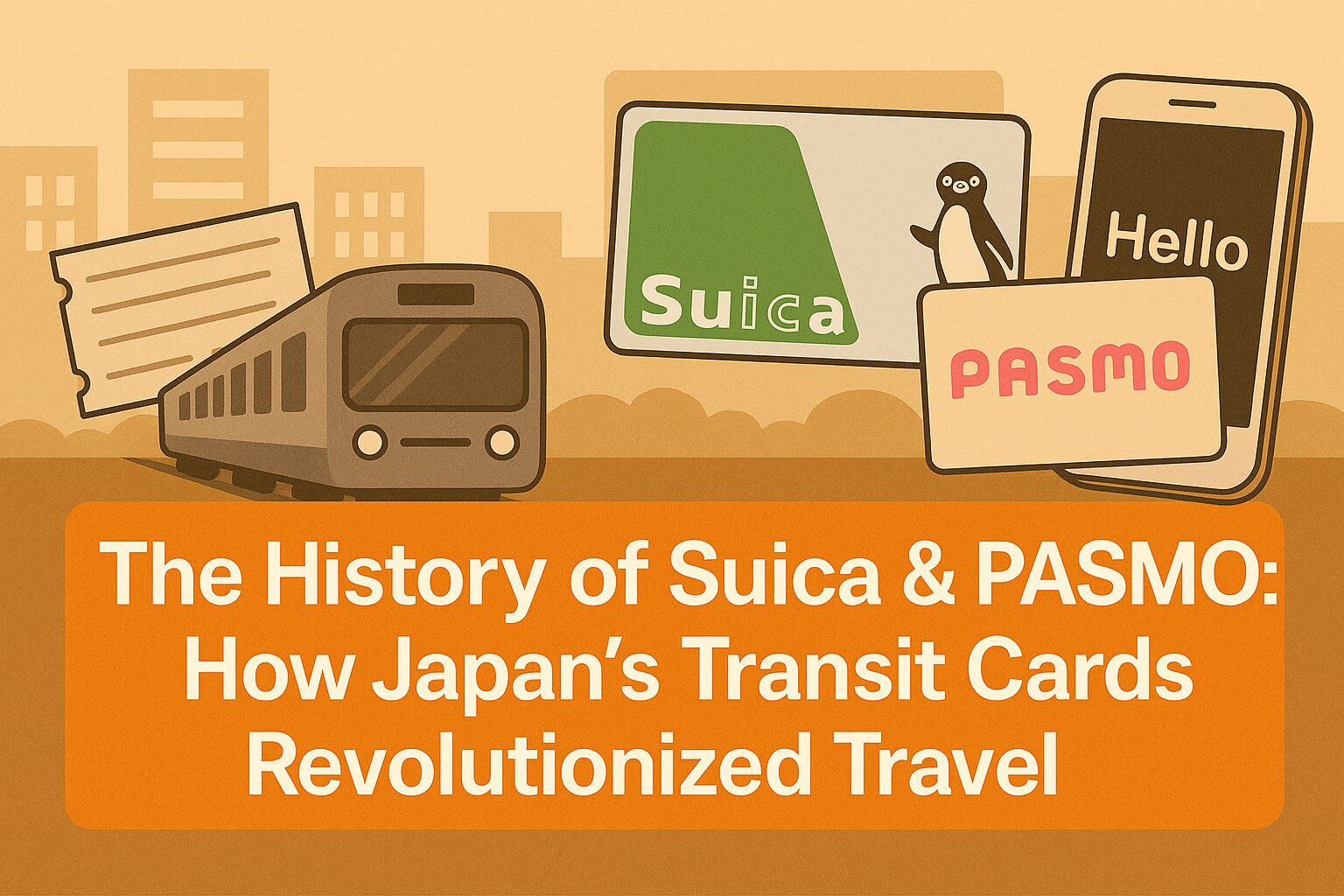👋Introduction
If you’ve ever taken a train in Japan, you’ve probably tapped a little card at the gate and breezed right through. That card was likely a Suica or PASMO, Japan’s beloved IC transit cards. Today, they’re used by millions—not just for trains and buses, but for shopping, vending machines, and even convenience store coffee.
But have you ever wondered where they came from? How did Japan go from paper tickets to tap-and-go magic? Let’s take a trip through time and uncover the fascinating story of Suica and PASMO—two small cards that completely changed how people move around in Japan.
1.Before IC Cards: Suica & PASMO’s Evolution
Until the early 2000s, taking a train in Japan required either purchasing a paper ticket or using a magnetic card such as the “Orange Card.” Travelers had to line up at ticket machines, fumble for change, and figure out complex fare charts, which was especially stressful for tourists.
The process was slow, and the stations were crowded. There was no real solution for people who changed train companies mid-trip, and each network used its own system. Japan’s world-class railway system was modern in many ways—but the ticketing system wasn’t one of them.
2.The Birth of Suica (2001)
In 2001, JR East (East Japan Railway Company) introduced Suica, short for Super Urban Intelligent Card. It was Japan’s first rechargeable IC (Integrated Circuit) card for public transit.
But Suica wasn’t just functional—it was lovable. The company introduced a cute penguin mascot to represent the card. Why a penguin? Because penguins walk smoothly—just like how passengers could now pass through ticket gates smoothly. The Suica Penguin became an instant hit, appearing on posters, ads, and even merchandise.
Suica used FeliCa technology, developed by Sony, which allowed for fast and secure contactless payments. This marked the beginning of a new era for Japan’s railways.
3.The Introduction of PASMO (2007)
While Suica was great, it only worked on JR lines. That left out Tokyo’s many private railway companies and bus operators, which make up a large chunk of the city’s transport system.
So in 2007, PASMO was launched to fill the gap. It was created by a coalition of private rail and bus companies to offer similar tap-to-ride functionality as Suica. Unlike Suica, PASMO didn’t have a mascot—but it had a sleek design and wide usability across Tokyo.
The introduction of PASMO meant that, finally, almost every major transport provider in Tokyo was covered by IC cards. Whether you were riding a JR train, a subway, or a private bus, one card was enough.
4.Nationwide Integration (2013)
In March 2013, a massive leap forward happened:
Suica, PASMO, ICOCA, TOICA, Kitaca, and several other regional IC cards became fully interoperable.
That meant a Suica card could now be used in Osaka or Fukuoka, and a Kansai ICOCA could be used in Tokyo. No need to buy different cards for each city—Japan’s entire rail network had essentially become IC-card friendly.
For tourists, this was a game-changer. One card could handle trains, buses, and even some purchases almost anywhere in Japan. Locals loved it too. It made commuting and travel smoother than ever.
5.Digital Revolution: Mobile Suica and Contactless Living
In 2016, Mobile Suica was launched for iPhone, and later became available for Android via Google Pay. With Suica now stored directly on smartphones, carrying a physical card was no longer necessary.
Digital top-ups and instant balance checks made daily travel smoother, and integration with other apps made the experience even more convenient.
The COVID-19 pandemic accelerated the shift to contactless living. Suica and PASMO became even more valuable—not just for travel, but for shopping at vending machines, convenience stores, supermarkets, and more.
6. Fun Facts & Cultural Impact
- The Suica Penguin became a pop icon. There’s a life-sized statue of him at JR Tokyo Station, and he even has his own merch line.
- PASMO’s card design has barely changed since 2007—simple, clean, and very “Tokyo.”
- Collectors love limited-edition Suica and PASMO cards. Some sell online for hundreds of dollars!
- Kids’ versions of the cards exist, as well as commuter pass types, regional variants, and even character-themed cards like Pokémon or Hello Kitty.
7.Today: Must-Have Tools for Travelers
These days, Suica and PASMO are more than transport cards. They’ve become essential travel tools for anyone visiting Japan. You can use them at:
- Trains and buses
- Convenience stores (7-Eleven, Lawson, FamilyMart)
- Vending machines
- Taxis (some accept IC cards)
- Restaurants, cafés, lockers, and more
You can even get special versions like the Welcome Suica, designed just for tourists with no deposit required.
🙌Conclusion
From paper tickets and fare confusion to one-tap travel and mobile wallets, the journey of Suica and PASMO reflects Japan’s passion for precision, efficiency, and yes—cuteness.
These two little cards made life easier for millions and turned something as mundane as commuting into something smooth, modern, and even a little bit fun.
So next time you tap through a gate in Tokyo, remember: there’s a whole story behind that beep.



コメント